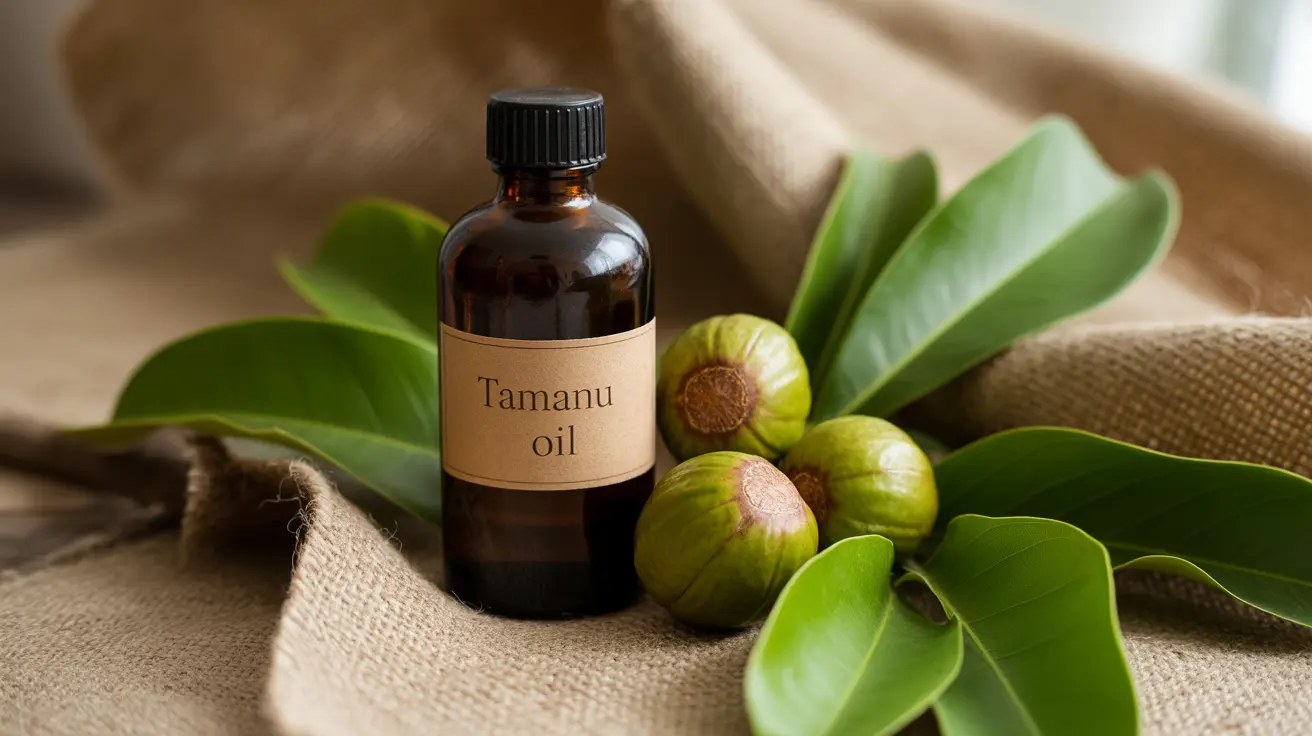Tamanu oil, derived from the nuts of the Calophyllum inophyllum tree, has emerged as a powerful natural remedy for various skin concerns. This remarkable oil, native to Southeast Asia and the Pacific Islands, has been traditionally used for centuries due to its impressive healing and regenerative properties. Its rich composition of beneficial compounds makes it a valuable addition to skincare routines.
Understanding the science behind tamanu oil reveals why it's gained attention in modern skincare. Packed with unique fatty acids, antioxidants, and anti-inflammatory compounds, this natural oil offers multiple benefits for skin health and recovery.
The Science Behind Tamanu Oil's Healing Properties
Tamanu oil contains several active compounds that contribute to its therapeutic effects. These include calophyllolide, a powerful anti-inflammatory agent, and xanthones, which provide antibacterial benefits. The oil is also rich in fatty acids like linoleic acid and oleic acid, which help maintain skin barrier function and promote healing.
Key Benefits for Skin Health
Wound Healing and Scar Reduction
One of tamanu oil's most notable properties is its ability to promote wound healing. The oil stimulates the production of new skin cells and collagen, helping wounds heal more efficiently. Its regenerative properties also make it effective in reducing the appearance of scars, including those from acne, surgery, or injuries.
Acne Treatment and Prevention
The natural antibacterial and anti-inflammatory properties of tamanu oil make it particularly effective for managing acne. It helps combat acne-causing bacteria while reducing inflammation and redness associated with breakouts. The oil's ability to regulate sebum production can also help prevent future breakouts.
Managing Skin Conditions
Tamanu oil has shown promise in treating various skin conditions, including eczema and psoriasis. Its moisturizing and anti-inflammatory properties help soothe irritated skin, while its ability to strengthen the skin barrier can prevent future flare-ups.
How to Use Tamanu Oil Safely
Proper Application Methods
For best results, apply tamanu oil to clean, slightly damp skin. The oil can be used alone or mixed with other skincare products. Start with a small amount and gradually increase as needed. For facial application, 2-3 drops are typically sufficient.
Safety Considerations
While tamanu oil is generally safe for most skin types, it's important to perform a patch test before full application. Those with nut allergies should exercise particular caution, as tamanu oil is derived from tree nuts. The oil should not be relied upon as a substitute for sunscreen, as it does not provide adequate UV protection.
Frequently Asked Questions
What are the main skin benefits of using tamanu oil for conditions like acne, eczema, and scars?
Tamanu oil offers multiple benefits for skin conditions: it helps reduce inflammation and bacteria in acne, soothes and moisturizes eczema-prone skin, and promotes cell regeneration to minimize scarring. Its natural compounds support overall skin healing and repair.
How does tamanu oil help with wound healing and reducing the appearance of scars?
Tamanu oil accelerates wound healing by stimulating collagen production and new cell growth. It contains unique compounds that promote tissue regeneration, helping to fade existing scars and prevent new scar formation during wound healing.
Is tamanu oil safe to use on sensitive skin, and are there any precautions or allergy risks?
While generally safe for most skin types, individuals with sensitive skin or nut allergies should perform a patch test first. Those with tree nut allergies should avoid tamanu oil entirely. Start with minimal amounts to test skin reaction.
Can tamanu oil be effective in treating acne, and how does its antibacterial and anti-inflammatory action work?
Yes, tamanu oil can effectively treat acne through its natural antibacterial compounds that fight acne-causing bacteria. Its anti-inflammatory properties help reduce redness and swelling, while its ability to regulate oil production helps prevent new breakouts.
How should tamanu oil be applied for skin and hair care, and can it replace sunscreen for sun protection?
Apply 2-3 drops of tamanu oil to clean, damp skin or mix with your regular moisturizer. For hair, apply a few drops to the scalp or mix with your regular hair oil. Important note: tamanu oil cannot replace sunscreen as it does not provide adequate UV protection.




